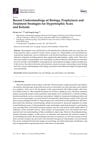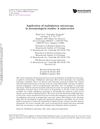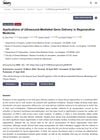TLDR Standardized ultrasound methods are needed for measuring scar thickness in clinical practice.
This scoping review aimed to identify ultrasound methods used to measure traumatic scar thickness and map gaps in translating these methods into practice. Analyzing 118 records with 5,213 participants, it found that B-mode ultrasound, particularly high-frequency (>20 MHz), was the most common method, but reporting on methods and reliability was poor. Most studies focused on early research stages, highlighting a gap in clinical practice evaluation. The review emphasizes the need for standardized ultrasound measurement methods and proposes nine methodological considerations to guide practitioners.
 305 citations
,
March 2018 in “International journal of molecular sciences”
305 citations
,
March 2018 in “International journal of molecular sciences” The document concludes that the understanding of scar formation is incomplete and current prevention and treatment for hypertrophic scars and keloids are not fully effective.
 1 citations
,
July 2024 in “Skin Research and Technology”
1 citations
,
July 2024 in “Skin Research and Technology” High-frequency ultrasound can effectively visualize and assess hair loss.
 January 2024 in “Clinical, cosmetic and investigational dermatology”
January 2024 in “Clinical, cosmetic and investigational dermatology” Dermatologists should customize cosmetic treatments for dark-skinned patients to minimize risks and complications.
 58 citations
,
November 2013 in “Journal of Innovative Optical Health Sciences”
58 citations
,
November 2013 in “Journal of Innovative Optical Health Sciences” Multiphoton microscopy is a promising tool for detailed skin imaging and could improve patient care if its challenges are addressed.
 3 citations
,
April 2022 in “Bioengineering”
3 citations
,
April 2022 in “Bioengineering” Ultrasound can help deliver genes to cells to stimulate tissue regeneration and enhance hair growth, but more research is needed to perfect the method.
7 citations
,
March 2021 in “IntechOpen eBooks” RF energy is used in medical and beauty treatments to heat tissues, tighten skin, and reduce fat safely.





